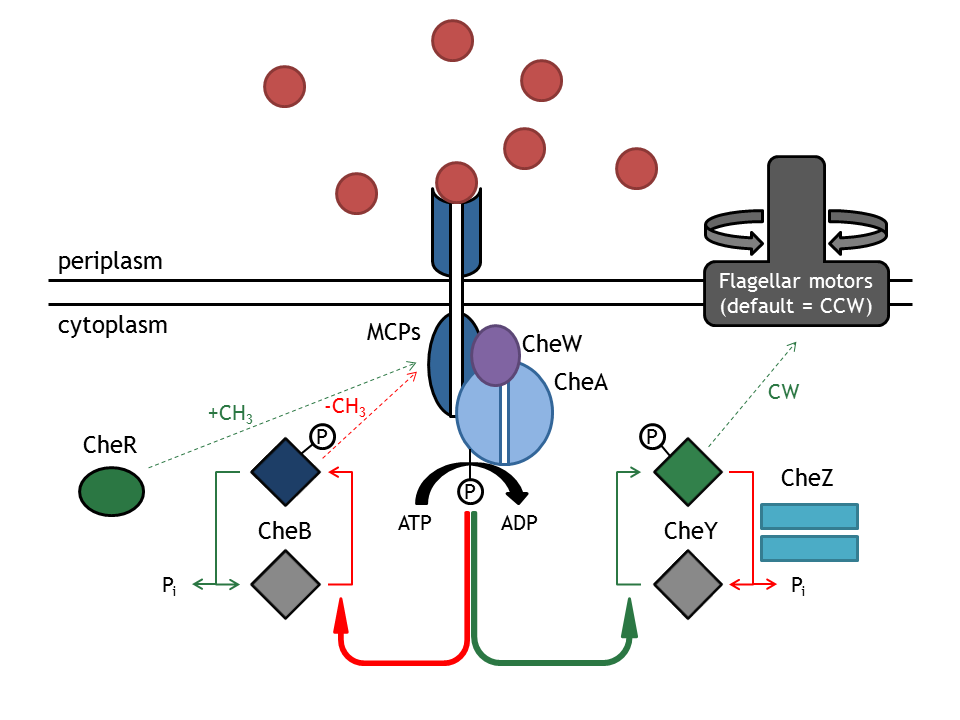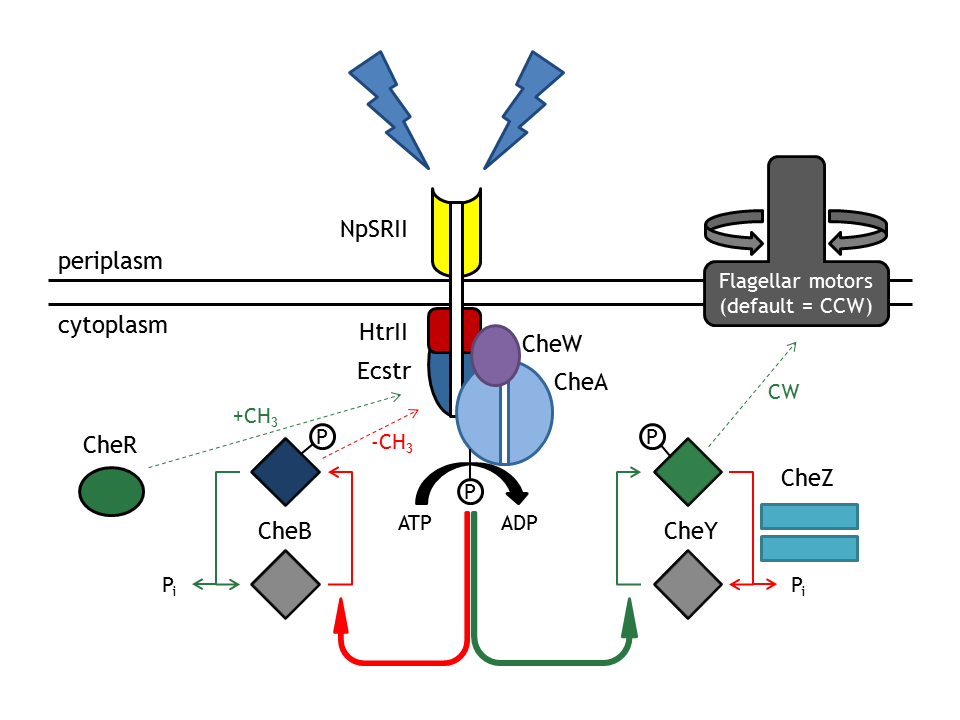Team:ETHZ Basel/Modeling/Combined
From 2010.igem.org
Combined Models
Interface
To create the complete model of E. lemming, the individual modules chemotaxis pathway, light switch and movement model were coupled, by defining input - output interfaces. The combination was achieved in two steps:
- First, the deterministic light switch and chemotaxis models were combined corresponding to the different devices: PhyB/PIF3 light switch and ALR light switch.
- Second, the stochastic movement model was combined with the light switch - chemotaxis model. The interface was defined as the dependency CheYp - directed movement probability (or the bias). At every time point of the simulation, the next state (directed movement/tumbling) of the bacterium was selected, based on the value of the input bias.
PhyB/PIF3 light switch - Chemotaxis
The following assumptions have been made according to the molecular mechanism to link the light switch and chemotaxis models: Upon red light pulse induction, the two light-sensitive proteins dimerize and thus the coupled Che protein is spatially dislocated. This means
- CheR is not able to methylate the MCPs anymore,
- CheY can't be phosphorylated and interact with the motor anymore; nevertheless, it still can be dephosphorylated.
- Since CheB and CheZ regulate the chemotactic receptor pathway inverse compared to CheR and CheY, they repress tumbling
- CheB is not able to demethylate the MCPs and can't be phosphorylated anymore, but still can be dephosphorylated,
- CheZ can't dephosphorylate CheY anymore (This assumption is very unsteady, since CheY is not strictly located).
All of these assumptions will lead to a decrease of tumbling / directed movement ratio upon red light induction and an increase of corresponding far-red light induction.
Archeal light receptor - Chemotaxis
This idea was modeled & simulated as described in Archeal light receptor. Then it was successfully implemented in the laboratory. Click here to see the E. lemming in action, at ETH Zurich!
Chemotaxis - Movement
The combination of the deterministic and probabilistic models was (first) the biggest challenge and (afterwards) the biggest accomplishment in combining the models. Besides its theoretical complexity, the complete coupling is also conceptually very important. It closes the loop of our E. lemming modeling and it combines two different types of models: deterministic and stochastic, under the same global approach. The two models have different timesteps, the molecular one being much faster than the stochastic one, therefore their combination has been done via Simulink interface. Both models have been independently numerically integrated and the output of the deterministic model was passed as an input to the stochastic one, at every slower time-step. The main assumption we used in the complete coupling was that the mean run length is a function of the bias, while mean tumbling length is bias - independent.
Download
The combined model is included within the Matlab Toolbox and can be downloaded there.
 "
"





